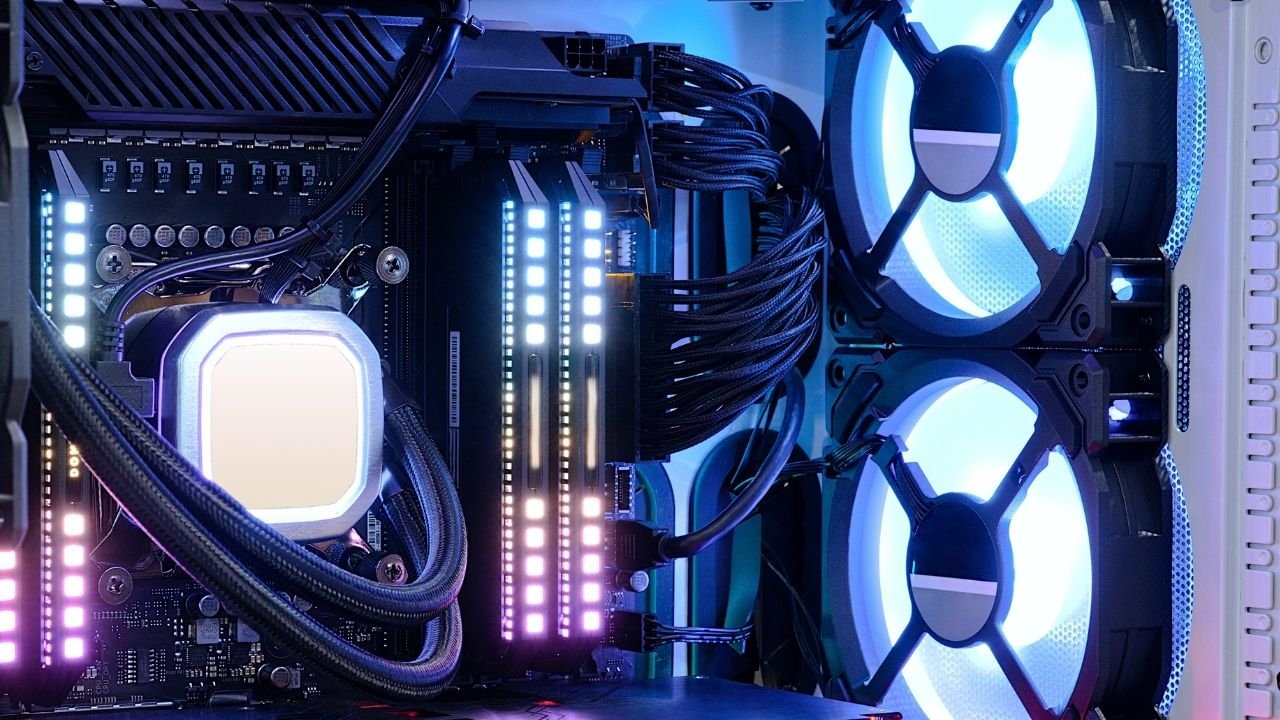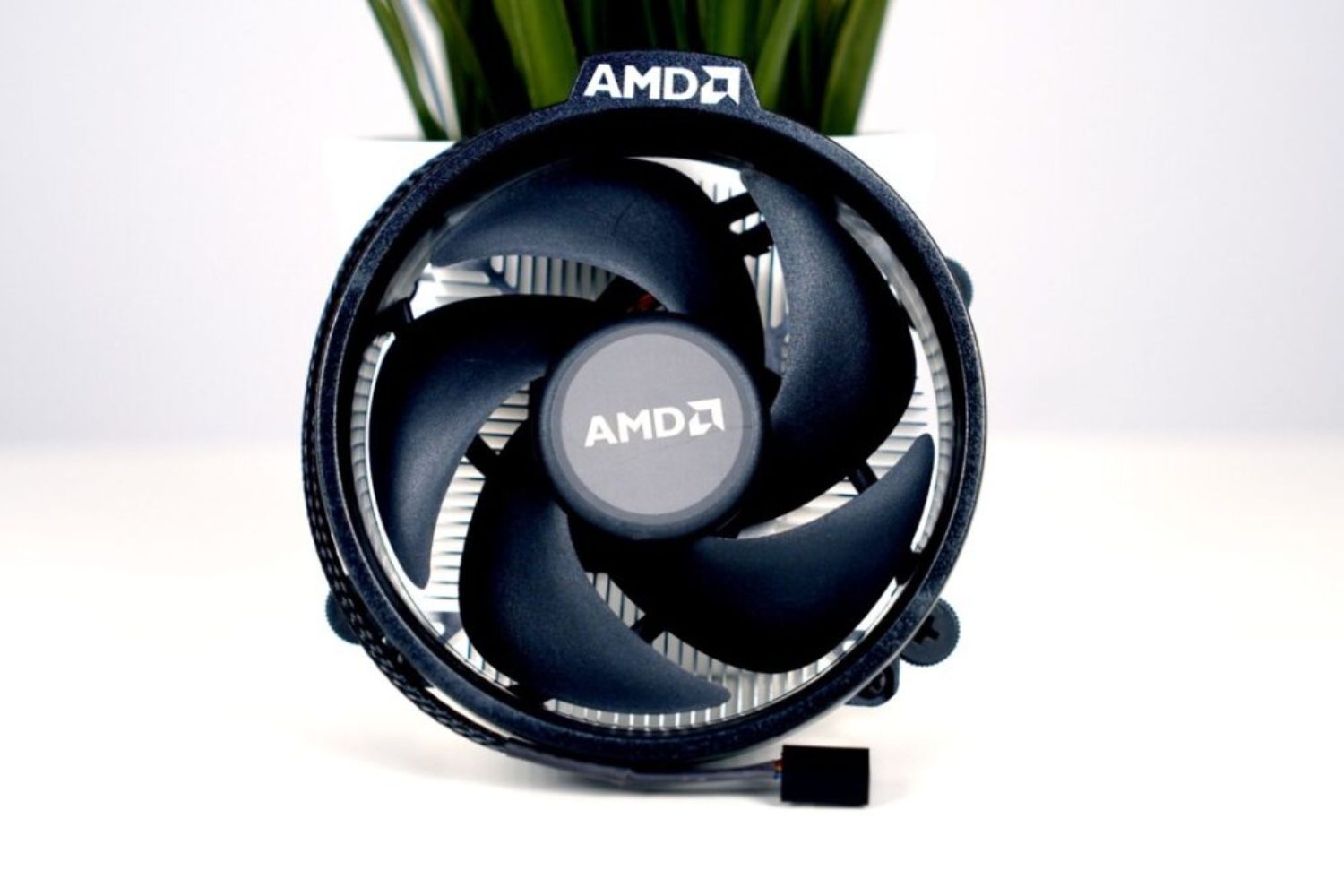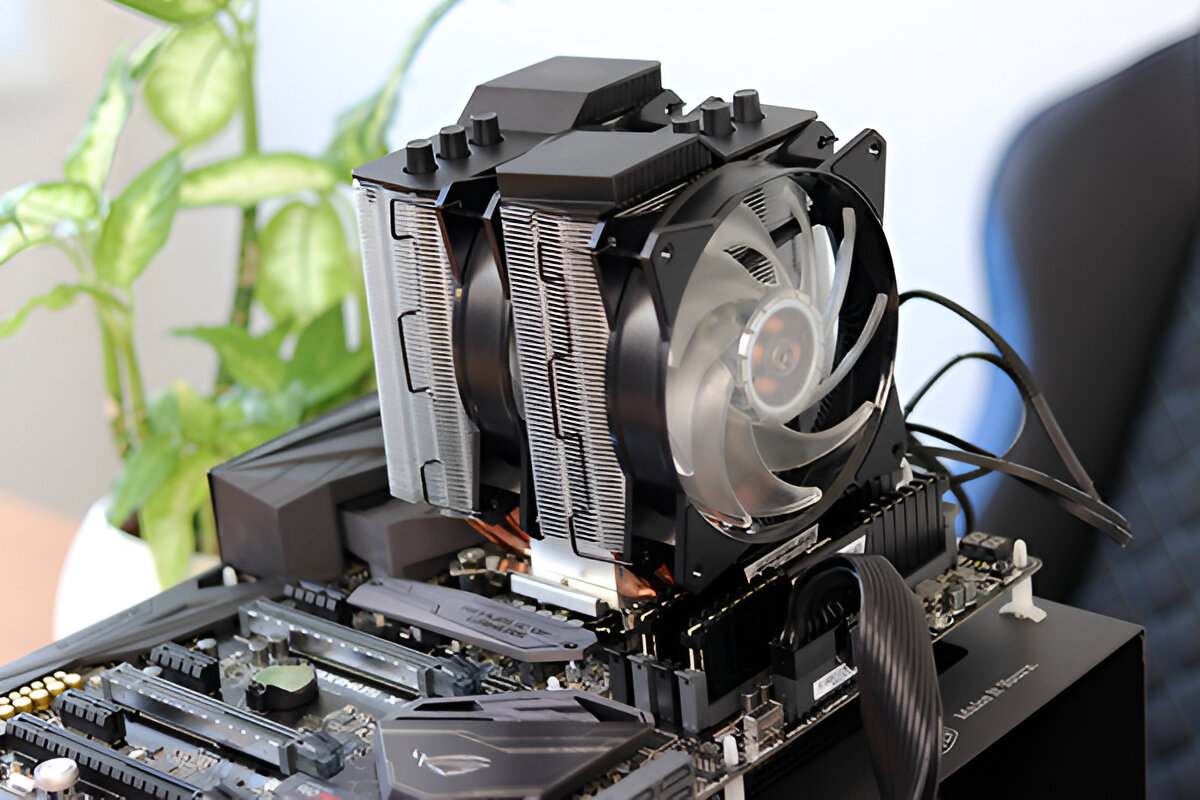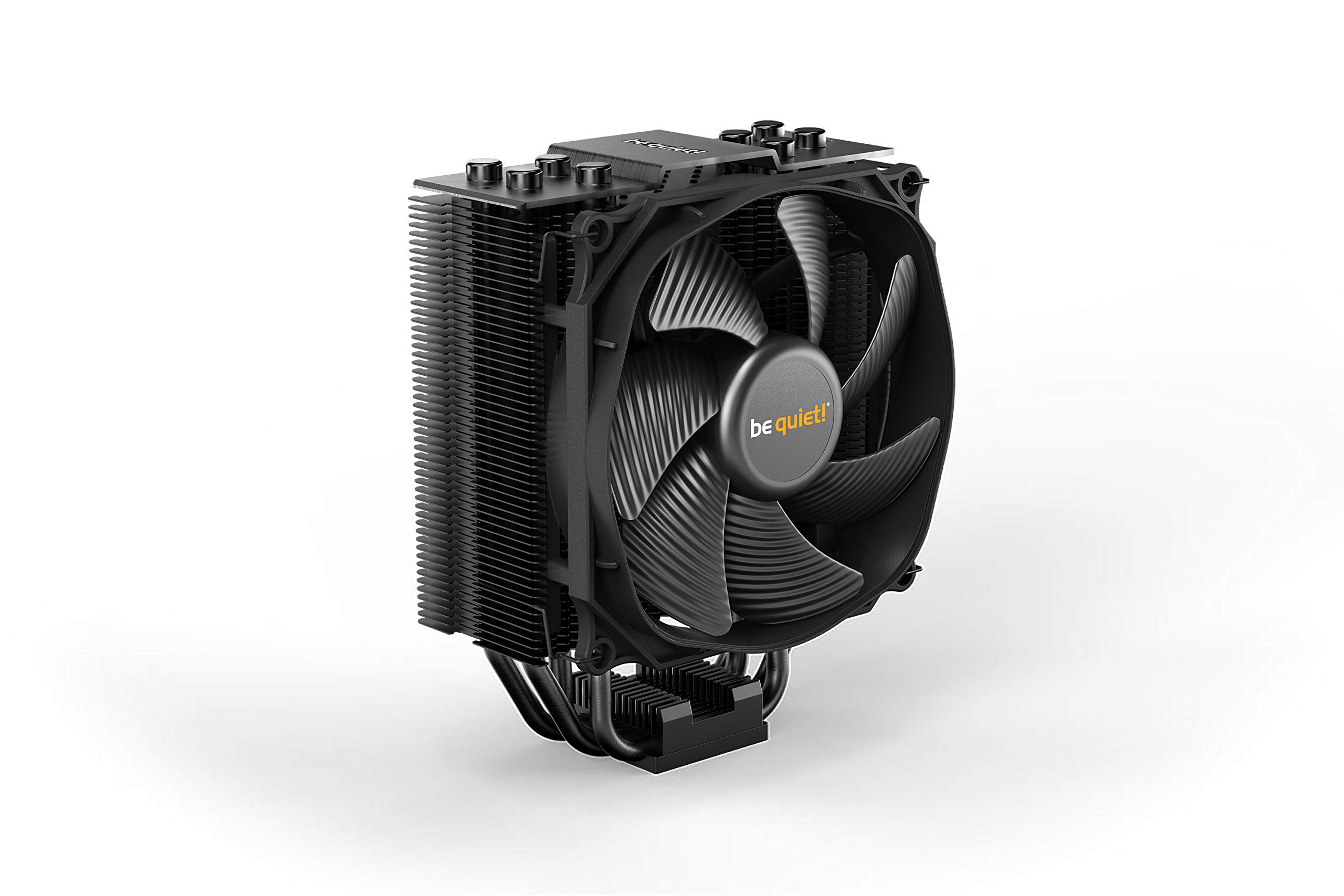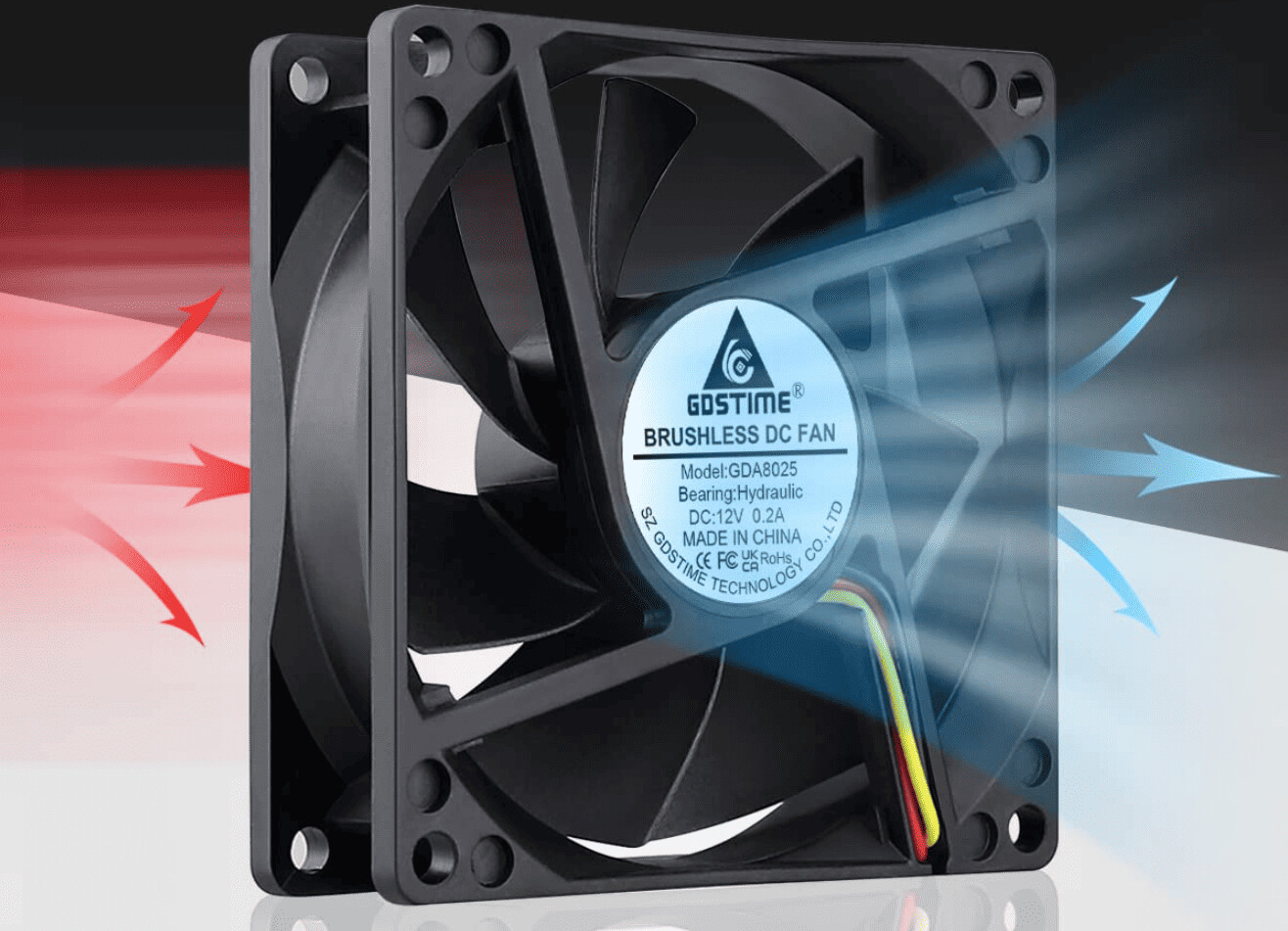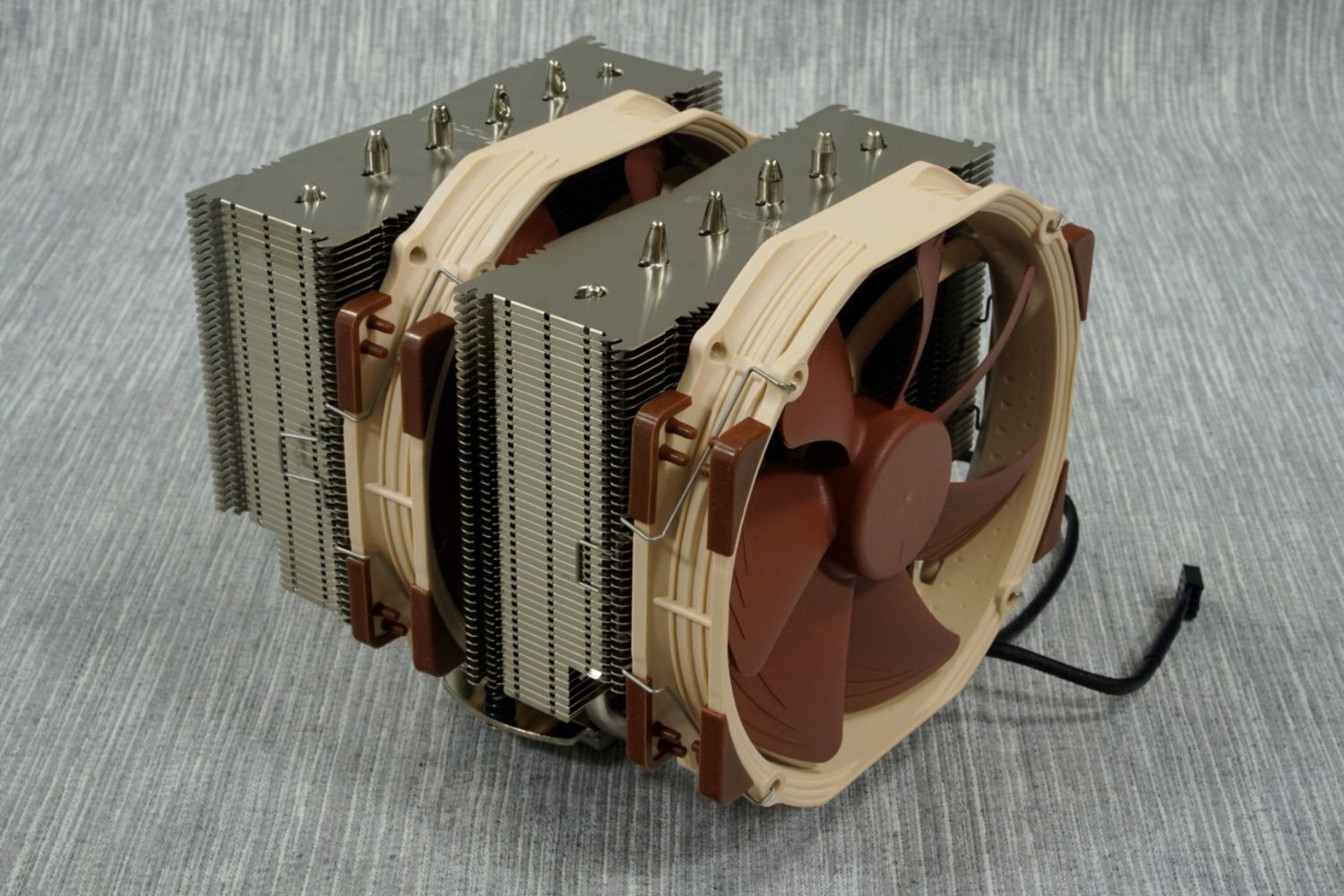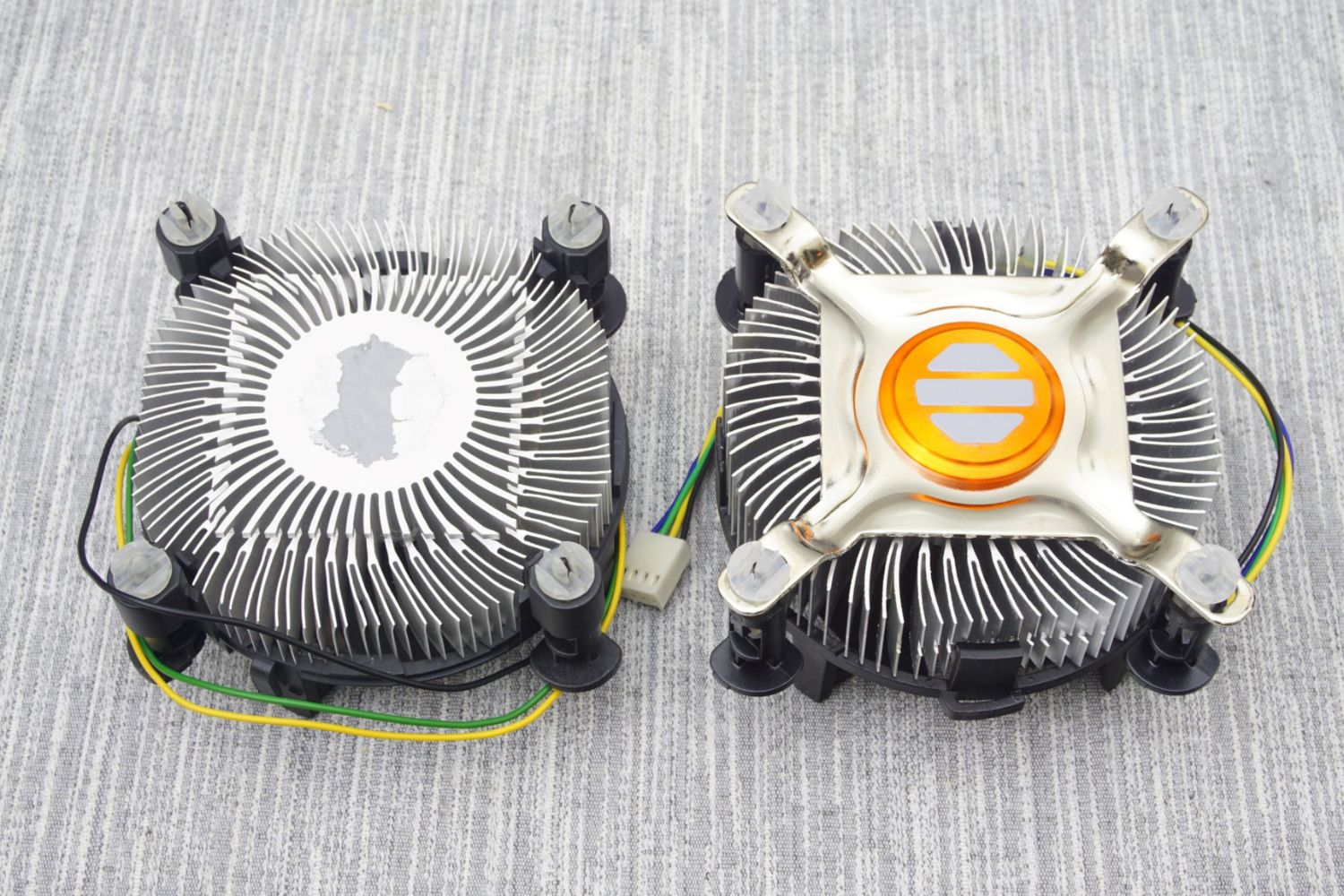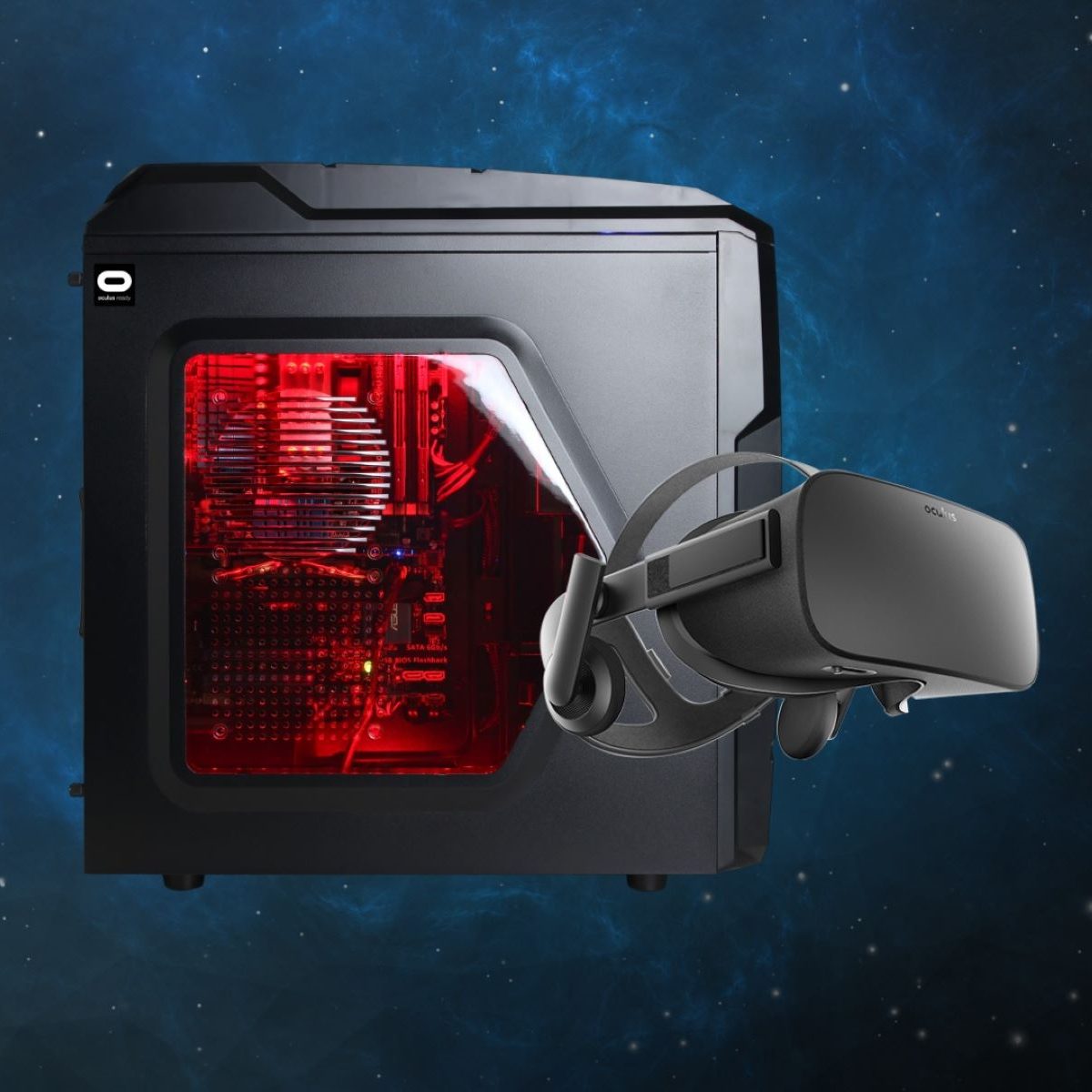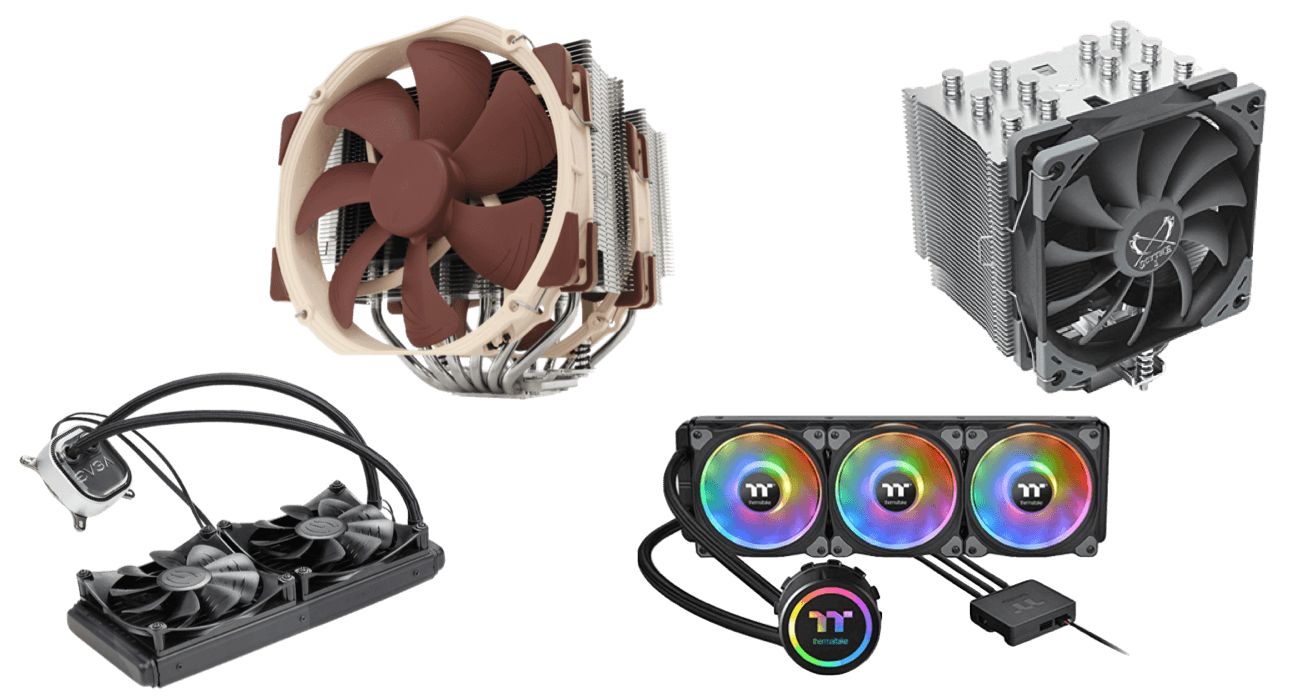Introduction
When it comes to keeping your computer running efficiently, proper cooling is vital, particularly for your CPU (central processing unit). Overheating can lead to decreased performance, system crashes, and even permanent damage to your hardware. That’s where CPU coolers come in. These cooling devices are designed to dissipate heat from the CPU and maintain optimal operating temperatures.
While most CPUs come with stock coolers, many enthusiasts and gamers opt for aftermarket CPU coolers to achieve better cooling performance. One popular technique to further enhance cooling is to add a second CPU fan to the CPU cooler. But how much does this really help? Is it worth the investment? In this article, we will delve into the world of CPU coolers and explore the benefits and considerations of adding a second CPU fan.
CPU coolers come in various types, including air coolers and liquid coolers. Air coolers consist of a heatsink, which is connected to the CPU using a thermal interface material, and one or more fans that blow air onto the heatsink. Liquid coolers, on the other hand, use liquid or coolant to transfer heat away from the CPU through a series of tubes and a radiator with fans. Regardless of the type, the goal is the same – to remove heat from the CPU to ensure optimal performance and longevity.
Proper cooling is crucial because CPUs generate a significant amount of heat during operation. As the CPU processes data and performs calculations, it produces waste heat that needs to be dissipated to prevent overheating. When a CPU reaches high temperatures, it can throttle its performance to reduce heat generation, resulting in decreased overall performance. In extreme cases, thermal throttling can even cause the system to shut down to protect sensitive components from damage.
Adding a second CPU fan to your CPU cooler can potentially enhance its cooling capabilities. With two fans, you can increase the airflow across the heatsink, improving heat dissipation and lowering temperatures. This can be particularly beneficial for overclockers or those who push their CPUs to their limits with resource-intensive tasks such as gaming or video editing. Additionally, a second fan can help distribute airflow more evenly across the heatsink, reducing hotspots and ensuring efficient cooling.
However, it’s important to consider several factors before deciding to add a second CPU fan. These include the compatibility of your CPU cooler, available space within your computer case, and the noise level generated by the additional fan. In the next sections, we will explore these considerations in more detail and provide guidance on how to install a second CPU fan if you decide it’s the right choice for your system.
What is a CPU Cooler?
A CPU cooler is a device specifically designed to dissipate heat generated by the CPU of a computer. The CPU, or central processing unit, is the brain of your computer, responsible for executing instructions and performing calculations. As the CPU works, it generates a significant amount of heat, which, if not managed properly, can lead to decreased performance and even permanent damage to the processor.
The primary function of a CPU cooler is to cool down the CPU and maintain optimal operating temperatures. It achieves this by utilizing various cooling mechanisms, such as heatsinks and fans, to transfer and dissipate heat away from the CPU.
A typical CPU cooler consists of a heatsink and a fan. The heatsink is a metal structure with numerous fins that serve to increase the surface area for heat dissipation. It is usually made of aluminum or copper due to their excellent thermal conductivity properties. The heatsink is in direct contact with the CPU, often aided by a layer of thermal paste or a thermal pad, which helps to transfer heat from the CPU to the heatsink efficiently.
The cooling fan plays a crucial role in the CPU cooler’s operation. Its primary purpose is to move air across the heatsink, enhancing the heat dissipation process. The fan draws cool air from the surroundings and blows it onto the heatsink, carrying away the heat generated by the CPU. This constant airflow helps to maintain lower temperatures and prevent the CPU from reaching thermal throttling thresholds.
In addition to air coolers, there are also liquid CPU coolers available on the market. These coolers use a closed-loop system that circulates a liquid or coolant through tubes connected to a radiator. Heat from the CPU is transferred to the liquid, which then flows to the radiator, where it is cooled by fans. The cooled liquid then returns to the CPU, completing the cycle. Liquid coolers often offer improved cooling performance compared to air coolers but can be more complex to install and maintain.
Overall, a CPU cooler is an essential component for any computer, ensuring that the CPU operates within safe temperature ranges for optimal performance and longevity. Without adequate cooling, the CPU can suffer from overheating, leading to performance throttling, instability, and potential hardware failure. Therefore, investing in a high-quality CPU cooler is crucial, especially if you engage in tasks that put a heavy load on your CPU, such as gaming, video editing, or 3D rendering.
How Does a CPU Cooler Work?
A CPU cooler is a vital component for maintaining the optimal temperature of your computer’s central processing unit (CPU). But how exactly does it work? Let’s dive into the inner workings of a CPU cooler to understand its role in cooling down your CPU.
The main goal of a CPU cooler is to dissipate the heat generated by the CPU during operation. As the CPU processes information and performs calculations, it produces waste heat as a byproduct. This heat needs to be efficiently removed to prevent the CPU from overheating, which can lead to performance issues and potential hardware damage.
To understand how a CPU cooler works, we need to look at its two primary components: the heatsink and the fan. The heatsink is a metallic structure typically made of aluminum or copper, known for their excellent thermal conductivity properties. It consists of a series of fins or ridges that increase the surface area available for heat dissipation.
When the CPU heats up, the heat is transferred from the CPU to the heatsink through direct contact or via a thermal interface material, such as thermal paste or a thermal pad. The increased surface area of the heatsink allows for more efficient heat transfer.
Here comes the role of the fan in the CPU cooler. The fan is responsible for moving air across the heatsink, facilitating heat dissipation. It draws cooler air from the surroundings and directs it towards the heatsink. As the air passes through the heatsink, it absorbs the heat, carrying it away from the CPU.
The airflow created by the fan helps to cool down the heatsink, preventing the CPU from reaching high temperatures. The hot air expelled from the heatsink is then expelled out of the computer case, making room for cooler air to flow in.
The efficiency of a CPU cooler greatly depends on the heatsink design and the fan’s performance. A larger heatsink with more fins will provide more surface area for heat dissipation, enhancing cooling capabilities. Similarly, a more powerful fan with higher airflow can effectively expel the heat-laden air, aiding in effective cooling.
In recent years, liquid cooling solutions have also gained popularity. These CPU coolers use a closed-loop system that circulates a coolant or liquid through tubes connected to a radiator. The liquid absorbs the heat from the CPU and carries it to the radiator, where it is cooled by fans. The cooled liquid then returns to the CPU to repeat the cycle.
Overall, a CPU cooler works by utilizing a combination of a heatsink and a fan (or liquid) to dissipate heat generated by the CPU. It plays a crucial role in maintaining the temperature of the CPU, ensuring optimal performance and preventing damage. Choosing an appropriate CPU cooler based on your computer’s requirements is essential for keeping your system running smoothly, especially during demanding tasks.
The Importance of Proper Cooling for Your CPU
Proper cooling for your CPU is a critical aspect of maintaining the health and performance of your computer system. CPUs generate a significant amount of heat during operation due to the high-speed electrical processes involved. It is essential to understand the importance of proper cooling and the potential consequences of inadequate cooling for your CPU.
One of the primary reasons for ensuring proper cooling is to prevent your CPU from overheating. When a CPU operates at high temperatures for extended periods, it can lead to decreased performance and even permanent damage to the processor. Modern CPUs are designed to handle certain temperature ranges, referred to as thermal envelopes. Operating your CPU within these boundaries is crucial to ensure optimal performance and longevity.
Inadequate cooling can cause the CPU to reach temperatures beyond its safe operating range. When the CPU surpasses this limit, it may engage in thermal throttling, a mechanism used to reduce the CPU’s performance to prevent damage. Thermal throttling results in decreased processing power, slower response times, and overall system instability.
Additionally, prolonged exposure to high temperatures can degrade the internal components of the CPU over time. This degradation can lead to an increased likelihood of system crashes, blue screens of death (BSOD), or failure of the CPU altogether. The cost of repairing or replacing a damaged CPU can far exceed the expense of investing in a proper cooling solution.
Proper cooling not only prevents overheating but also helps maintain consistent performance. CPUs that operate within their designated temperature range can sustain higher clock speeds, allowing for faster computing and improved multitasking capabilities. Whether you’re a gamer, a content creator, or a professional working on resource-intensive applications, proper cooling ensures that your CPU performs optimally even under heavy workloads.
Furthermore, a well-cooled CPU promotes stability throughout your entire system. High temperatures can negatively affect other components, such as RAM modules, graphics cards, and motherboard circuitry. Excessive heat can cause instability, data corruption, or even permanent damage to these components. By keeping your CPU cool, you create a more stable environment for your entire computer, reducing the risk of system failures and minimizing potential data loss.
In summary, the importance of proper cooling for your CPU cannot be overstated. It not only prevents overheating and potential damage to your CPU but also ensures consistent performance and stability throughout your computer system. By investing in a reliable CPU cooler and maintaining adequate airflow within your computer case, you can enjoy the benefits of a high-performing and durable system.
What is a Second CPU Fan?
A second CPU fan, as the name suggests, refers to an additional fan that is installed on a CPU cooler alongside the primary fan. While most CPU coolers come with a single fan that works to dissipate heat from the CPU, some enthusiasts and gamers choose to add a second fan for enhanced cooling performance.
The concept behind a second CPU fan is simple. By increasing the number of fans on the CPU cooler, you can improve the airflow across the heatsink, resulting in better heat dissipation and lower CPU temperatures. This can be particularly beneficial for users who engage in demanding tasks that put a heavy load on the CPU, such as gaming, video editing, or 3D rendering.
Adding a second CPU fan can offer several advantages. First and foremost, it helps to increase the overall airflow within the CPU cooler. With two fans working in tandem, more cool air is drawn into the heatsink, while hot air is expelled more effectively. This enhanced airflow can lead to lower CPU temperatures, reducing the risk of overheating and thermal throttling.
Furthermore, a second fan can help distribute airflow more evenly across the heatsink. In some cases, a single fan may not be able to cover the entire surface area of a large heatsink. By adding a second fan, you can ensure that the airflow reaches all parts of the heatsink, reducing the formation of hotspots and providing more consistent cooling across the CPU.
Another advantage of using a second CPU fan is noise reduction. Running two fans at a lower speed can achieve the same or even better cooling performance compared to a single fan running at higher speeds. This leads to reduced fan noise, creating a quieter and more comfortable computing environment.
However, it’s important to note that adding a second CPU fan may not always be necessary or beneficial for everyone. If your CPU cooler already performs well and keeps your CPU temperatures within safe limits, additional fans may not provide significant improvements. Additionally, the availability of space within your computer case and the compatibility of the CPU cooler with multiple fans should be considered before adding a second fan.
In summary, a second CPU fan is an optional component that can be added to a CPU cooler to enhance cooling performance. It increases airflow, improves heat dissipation, and helps maintain lower CPU temperatures. While it can be beneficial for users who engage in resource-intensive tasks, careful consideration should be given to compatibility and case space before adding a second fan. By leveraging the advantages of a second CPU fan, you can ensure optimal cooling for your CPU and maximize the performance of your computer system.
Benefits of Using a Second CPU Fan
Using a second CPU fan alongside your primary CPU fan can provide several benefits in terms of cooling performance. While a single fan is often sufficient for adequate cooling, opting for a second fan can offer additional advantages for enthusiasts who prioritize optimum airflow and lower CPU temperatures. Let’s explore the benefits of using a second CPU fan.
1. Improved Heat Dissipation: One of the key benefits of adding a second CPU fan is the increased airflow across the CPU cooler’s heatsink. With two fans, more cool air is drawn into the heatsink, helping to dissipate heat more effectively. This results in lower CPU temperatures, reducing the risk of overheating and potentially improving overall system stability.
2. Enhanced Airflow Distribution: In some cases, a single fan may not evenly distribute airflow across the heatsink, leading to localized hotspots. By adding a second fan, you can ensure that the airflow is distributed more evenly, covering the entire surface of the heatsink. This reduces the chances of hotspots and improves consistent cooling performance across the CPU.
3. Reduced CPU Throttling: CPU throttling occurs when the CPU reduces its performance to prevent overheating. By providing better cooling through the use of a second CPU fan, you can significantly reduce the likelihood of thermal throttling. This ensures that your CPU operates at its optimal frequency, leading to improved performance in demanding tasks and reduced latency.
4. Noise Reduction: Adding a second fan allows you to achieve the same or even better cooling performance at lower fan speeds. This can result in reduced fan noise, creating a quieter and more enjoyable computing experience. If maintaining a quieter system is important to you, using multiple fans running at lower speeds can be an effective solution.
5. Overclocking Potential: For overclocking enthusiasts, a second CPU fan can be especially beneficial. Overclocking pushes the CPU beyond its stock frequency to achieve higher performance. However, this increased performance also generates more heat. By using a second fan, you can enhance cooling efficiency, enabling better heat dissipation and potentially enabling higher overclocking stability.
It’s important to note that the benefits of using a second CPU fan may vary depending on factors such as the CPU cooler model, computer case airflow, and the specific CPU being cooled. Before purchasing and installing a second fan, it’s advisable to research and ensure your CPU cooler and case can accommodate an additional fan. Additionally, consider the noise level and power consumption of the second fan to maintain a balance between performance and noise reduction.
In summary, using a second CPU fan offers advantages such as improved heat dissipation, enhanced airflow distribution, reduced CPU throttling, noise reduction, and potential overclocking benefits. However, it’s crucial to assess your specific system requirements and compatibility before deciding to add a second fan. If you engage in resource-intensive tasks or plan to overclock your CPU, the addition of a second CPU fan can provide substantial cooling benefits, ultimately enhancing the performance and longevity of your system.
Does Adding a Second CPU Fan Really Help?
Adding a second CPU fan to your CPU cooler is a common practice among enthusiasts and gamers looking for improved cooling performance. While there are potential benefits to using a second fan, it’s essential to understand the factors that determine its effectiveness and whether it will truly help in your specific situation.
The effectiveness of adding a second CPU fan depends on several factors, including the CPU cooler design, the airflow within your computer case, and the specific CPU being cooled. In some cases, the addition of a second fan can lead to noticeable improvements in cooling performance, while in other cases, the impact may be minimal or even negligible.
To determine whether adding a second CPU fan will help, consider the following factors:
1. CPU Cooler Design: Some CPU coolers are specifically designed to accommodate two fans, with optimized fins and heat pipe layouts. These coolers benefit more from the addition of a second fan, as they are designed to distribute airflow evenly across a larger surface area. If your CPU cooler is not designed for two fans, adding a second fan may not provide significant improvements.
2. CPU Cooler Performance: The cooling capacity of your CPU cooler plays a role in determining the effectiveness of a second fan. If your CPU cooler is already performing well and keeping your CPU temperatures within safe limits, adding a second fan may not result in noticeable temperature reductions. On the other hand, if your CPU temperatures are higher than desired, a second fan may provide more effective heat dissipation.
3. Computer Case Airflow: The overall airflow within your computer case can impact the effectiveness of a second CPU fan. If your case has poor airflow or limited space around the CPU cooler, adding a second fan may not have a significant impact. It’s important to ensure that your case has adequate ventilation and that the second fan can effectively draw in cool air and expel hot air.
4. CPU Workload and Overclocking: The workload you put on your CPU and whether you engage in overclocking can also influence the benefits of using a second fan. If you regularly run resource-intensive applications or have overclocked your CPU, the extra cooling provided by a second fan can be advantageous. It can help maintain lower temperatures and improve stability during demanding tasks.
While adding a second CPU fan can offer benefits such as improved heat dissipation, better airflow distribution, and reduced CPU throttling, it’s important to assess your specific situation before investing in an additional fan. Consider the factors mentioned above and evaluate whether your CPU cooler and system configuration can fully utilize the advantages of a second fan.
Ultimately, the effectiveness of adding a second CPU fan will vary depending on individual circumstances. It’s advisable to research your CPU cooler model, consult reviews and forums, and consider the compatibility and limitations of your system before making a decision. By taking these factors into account, you can determine if adding a second CPU fan will truly help in optimizing the cooling performance of your CPU.
Factors to Consider Before Adding a Second CPU Fan
Adding a second CPU fan to your CPU cooler can potentially enhance cooling performance, but it is essential to consider several factors before making this decision. Evaluating these factors will ensure that you make an informed choice and maximize the benefits of adding a second fan. Here are some key factors to consider:
1. Compatibility: Not all CPU coolers are designed to accommodate multiple fans. Before adding a second CPU fan, check if your CPU cooler has mounting points or brackets for an additional fan. Also, ensure that the fan size and connector types are compatible with your cooler and motherboard.
2. CPU Cooler Design: The design of your CPU cooler plays a significant role in determining the effectiveness of a second fan. Consider whether the cooler’s heatsink has adequate clearance and space for an additional fan. Additionally, assess the heatsink design to ensure that airflow will be evenly distributed when using two fans.
3. Case Space: Assess the available space within your computer case. Adding a second CPU fan requires sufficient clearance around the CPU cooler. Ensure that there is enough space between the CPU cooler and other components, such as RAM modules or a nearby graphics card, to avoid potential clearance issues.
4. Airflow and Ventilation: Proper airflow within your computer case is crucial for effective cooling. Evaluate the case’s ventilation design and airflow pathways. Determine if there are sufficient intake and exhaust fans, and whether adding a second CPU fan will improve overall airflow or disrupt existing airflow patterns.
5. Noise Considerations: Adding a second fan can potentially increase the noise generated by your computer system. Consider the noise level of your current CPU fan and whether adding a second fan will significantly contribute to overall system noise. Look for fans with lower noise ratings or consider adjusting fan speeds via fan control software to achieve a balance between cooling performance and noise reduction.
6. Cost and Value: Evaluate the cost-benefit ratio of adding a second CPU fan. Consider whether the potential cooling improvements justify the expense and effort required. If your CPU temperatures are already within safe operating limits, and your system’s performance and stability are satisfactory, adding a second fan may not be necessary.
It is essential to carefully consider these factors before deciding to add a second CPU fan. Assessing compatibility, case space, airflow, noise considerations, and overall value will help you determine whether the addition of a second fan will lead to significant cooling improvements and enhanced system performance.
Remember to research and read user reviews to gain insights into the experiences of others who have added a second CPU fan to the same CPU cooler or case. This information can provide valuable guidance and help you make an informed decision tailored to your specific system configuration and requirements.
How to Install a Second CPU Fan
Installing a second CPU fan involves a few steps to ensure proper installation and optimal cooling performance. Here’s a general guide on how to install a second CPU fan:
1. Gather the necessary tools: Start by gathering the tools required for the installation. This may include a screwdriver, thermal paste, cable ties, and additional fan screws.
2. Select the appropriate fan: Ensure that the fan you choose is compatible with your CPU cooler in terms of size, connector type, and airflow direction. It’s best to use a fan of the same make and model as the primary fan to maintain consistency.
3. Prepare the CPU cooler: Before installing the second fan, clean any dust or debris from the CPU cooler and the primary fan. This will ensure optimal airflow and cooling efficiency.
4. Mount the second fan: Attach the second fan to the CPU cooler using the provided mounting brackets or clips. Ensure that the fan is securely fastened and positioned correctly. The fan should blow air in the same direction as the primary fan for proper airflow.
5. Connect the fan power: Connect the power cable of the second fan to an available fan header on your motherboard. Ensure that the fan is connected to the appropriate pin for speed control, if necessary.
6. Apply thermal paste: If you have removed the CPU cooler during the installation process, clean off the old thermal paste from the CPU and heatsink. Apply a small amount of new thermal paste to the CPU, following the manufacturer’s instructions.
7. Manage cables: Ensure that the cables from both fans are neatly routed and secured using cable ties. Proper cable management avoids interference with other components and maintains good airflow within the case.
8. Test the setup: Power on your computer and monitor the temperatures to ensure that the new fan is functioning properly and providing the desired cooling improvements. Use appropriate software, such as BIOS or CPU monitoring utilities, to check temperature readings.
Please note that these steps are general guidelines. It’s important to consult the specific instructions provided by the manufacturer of your CPU cooler and fans for accurate installation procedures. Some CPU coolers may have unique mounting mechanisms or specific fan placement requirements, so refer to the documentation to ensure the correct installation process.
Additionally, be cautious when working inside your computer to avoid potential damage to components. Take proper electrostatic discharge precautions and follow safety guidelines to safeguard yourself and your equipment.
By following these steps and taking the necessary precautions, you can successfully install a second CPU fan and enhance the cooling performance of your CPU cooler. Enjoy the benefits of improved heat dissipation and lower CPU temperatures, ensuring optimal performance and reliability for your computer system.
Conclusion
Proper cooling for your CPU is crucial for maintaining optimal performance and preventing damage to your computer system. Adding a second CPU fan to your CPU cooler can provide several benefits, including improved heat dissipation, enhanced airflow distribution, and reduced CPU throttling. However, it’s important to consider various factors before deciding to add a second fan, such as compatibility, CPU cooler design, case space, airflow, and noise considerations.
When adding a second CPU fan, ensure compatibility with your CPU cooler and check if your case has enough space to accommodate the additional fan. Consider the airflow within your case and assess whether the addition of a second fan will improve overall cooling or disrupt existing airflow patterns. Keep noise levels in mind, especially if a quieter system is a priority for you.
While there are potential benefits to using a second CPU fan, it’s important to acknowledge that the effectiveness of adding a second fan will vary depending on individual circumstances. If your CPU cooler already performs well and keeps your CPU temperatures within safe limits, an additional fan may not provide significant improvements. However, if your CPU temperatures are high or you engage in resource-intensive tasks or overclocking, a second fan can offer noticeable cooling enhancements.
When installing a second CPU fan, ensure that you follow proper installation procedures outlined by the CPU cooler and fan manufacturers. This includes cleaning the CPU cooler, mounting the second fan securely, and properly connecting the fan power cables. Monitor the temperatures after installation to verify the effectiveness of the setup.
In conclusion, while the decision to add a second CPU fan depends on individual circumstances, it can be a valuable investment for those seeking enhanced cooling performance for their CPU. By considering the factors discussed and following proper installation procedures, you can optimize the cooling of your CPU, improve system stability, and prolong the lifespan of your computer hardware.







